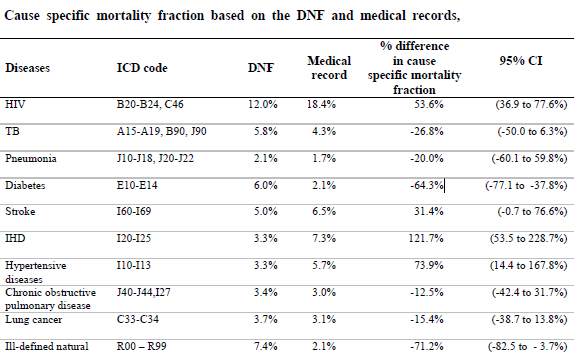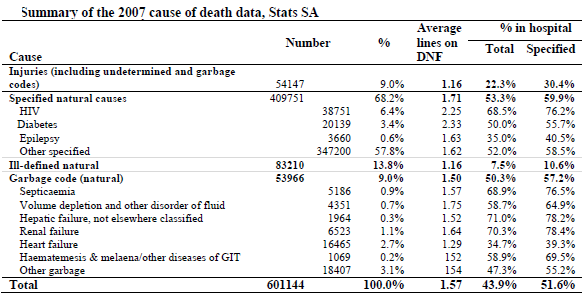Abstract: The development of African countries and more particularly South Africa, has led to some diseases that are hard to treat and they affect a large number of people in the population. More specifically, cardiovascular disease has taken hold and is increasing its effect on the people, especially those of middle and lower social class.
This is a new trend, as previously, the disease was thought to be mostly affecting the higher classes, due to their inactivity. This was mostly the case but presently, people of middle class, who are starting to hold higher positions and are able to move up the social ladder are influenced, as they get higher paid jobs and allow themselves more time without exercise and more fattening lifestyle.
Another reason is that the necessary equipment to diagnose and treat the disease is not available. This brings people back to the lower classes, as well as to the poorest conditions and slums. The cycle seems to drag people in, even though there has been some international attention in the recent years. The paper will focus on the issues in more details. Healthcare, governmental involvement, new techniques that are used to identify and treat the illness, as well as any help from other countries will be looked at.
With the governments increased involvement and the disease becoming an important issue for the country, some results are seen but they are not very reassuring. The rehabilitation has been shown to have great results but only 15-20 per cent of the population are “eligible private cardiac patients” (Perk, 2007).
These people get referred to the services but there is another problem that arises. There are often schemes and impossible requirements, as well as treatments that are imposed. People are fooled in their treatment and end up giving money away and not receiving the benefits.
Also, some companies do not have the ability to provide the medical assistance, as the people sent to them require more staff and special equipment, which they do not have. This shows that there is a significant disorganization with the healthcare system and the country must change its practices and processes. At the same time, the government is trying to educate people on the preventative measure for cardiovascular disease. The population is reminded to lead a healthy lifestyle, to eat healthy, exercise plenty and avoid stress.
The key figures of the disease are affected by people abusing tobacco products, being obese due to overeating and consuming fattening products, having a mix of other disorders, such as diabetes and high blood cholesterol. The statistics show that in year 2010, 0.56 per cent of people were affected, in 2011, 0.98 per cent and in 2012, 1.02 per cent (Rao, 2012). Such a steady and rapid increase in the disease is closely tied with people’s inability to get proper healthcare due to their resources and the organization of the hospitals.
Currently, there are benefit organizations and private funding agencies that are trying to change the statistics. One example is the Health in Africa Fund that will invest in small centers and health clinics, allowing for more equipment and better diagnosis. The African Development Bank is planning to invest around twenty million dollars towards the country’s needs while Gates Foundations is investing 7 millions of dollars.
There are also numerous companies and charitable organizations that are focusing on the environment and creating the necessary conditions for people to lead a healthy life. As a lot of these problems take place in the slums and conditions of people living below the poverty line, a reorganization of social division is taking place. The government is providing better possibilities for people to find jobs, more support to those in great need and investing in the healthcare system (Perk, 2007).

(Bradshaw, 2010).
Initiatives: Increase in technical provision of healthcare delivery is one of the proposed solutions, adding the number of workers and volunteers, identifying priorities, proper and efficient allocation of services, development of donor initiatives and proper government funding. As of right now, the estimates show that 70% of the budget went to “curative medicine, while a mere 10 percent has been allocated for preventative care” (Quaye, 2010).
The government tried to change things by aiding in the policy modification, “in March 2001, the government abolished user fees in health expenditure (Quaye 2010). The taxes have been somewhat lowered, as the majority of the poor population is forced to contribute the most, financially. Even though there is aid, the numbers of mortality are alarming:

(Bradshaw, 2010).
Several international organizations have taken specific attention to helping South Africa in this matter. For example, World Health Organization is one of the major organizations focused on delivering and bettering the system. They work with local hospitals to increase awareness, getting donors involved and promoting governmental help in finding a more lasting solution.
The IRC or International Rescue Committee is taking active role and participation in changing the life of many in South Africa. Social programs, fund raising and administration help is increasing, allowing for better living conditions and the total functioning of the society. Unfortunately, the majority of African people are still unable to afford healthcare.
This has led the government to set forward a number of reforms and so, the next decade will see major results. Some of the strategies include giving the local communities and administrators more control over healthcare resources and needs of people, the mobile technology is being used to an advantage in the access and transference of available equipment, medical device, drugs are being better controlled and the distribution has become more regulated.
The government realizes that sometimes the international agencies will not be able to provide help, so there is more orientation towards own strength and the reliance on charities is planned to be decreased.
The administration is also targeting the population in the poorest areas, as these are the primary sources of the decease. Universal coverage and basic access to benefits and packages that include necessary pharmaceuticals and tools will increase preventative measures and the onset of the disease (Jamison, 2006).
The changes that are taking place in the healthcare system and governmental control are none like before. The international attention, the increasing demand and number of people dying are all factors that contribute to major changes. Proper life conditions like shelter, food and most importantly drinking water must become readily accessible, so that people do not stress and become a part of the cycle of depression, poverty and unemployment.
The middles class has been increasing in the past decades and so, it must be maintained, as people are starting to fall back into the lower socioeconomic status. Awareness and prevention will prove effective in the next ten years and the future looks somewhat reassuring. The international help has been providing much change and it is greatly appreciated but in order for there to be a shift, the African government must rely on its own strength. This will concretely fix the society and the healthcare system.
References
Bradshaw, D. (2010). Cause of death statistics for South Africa: Challenges and possibilities for improvement. Tygerberg, South Africa: Burden of Disease Research Unit.
Jamison, D. (2006).Disease and Mortality in Sub-Saharan Africa. Washington, United States: World Bank Publications.
Perk, J. (2007). Cardiovascular Prevention and Rehabilitation. New York, United States: Springer.
Quaye, R. (2010). Balancing Public and Private Health Care Systems. Maryland, United States: University Press of America.
Rao, G. (2012). Coronary Artery Disease: Risk Promoters, Pathophysiology, and Prevention. New Delhi: Jaypee Brothers Medical Publishers.